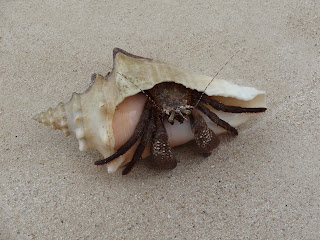San Blas Islands
The San Blas Islands belong to Panama and are dotted along the Caribbean coast. The 365 islands belong to a culture known as Kuna. These people live in separation from Panama and hold numerous traditions, unique to any other country. We decided we would be senseless to miss out on this cultural experience, along with the idyllic islands. So, we planned a boat trip to take us through San Blas in order to reach Colombia. Besides flying, the conventional option would have been to take a sailboat and end up in Cartegena. However, we opted for a trip that focused on spending optimum time on the islands and seeing the communities, ending our trip on the border of Panama and Colombia.
A jeep took us on the 4 hour ride to the dock where our boat was waiting. This small boat was our ticket to Colombia, and after sealing our luggage water tight with bin liners we set off for our first taste of San Blas: Pelican Island. En route we passed many of the 365 San Blas islands, some inhabited by the Kuna people.
Pelican island was idyllic, a tiny sandbank in the sea with a few palm trees and crabs to occupy it. We settled here for lunch and a swim/snorkel before moving on.
 |
| Pelican Island. |
Late afternoon we boated in between the islands again to one called Uwargunduh. Here we spent time walking around the town with its simple thatched bungalow houses, and also played with the local and extremely energetic children. For dinner the family hosting us cooked a great fish dinner and dessert. All of the families on the island were extremely friendly and hospitable. We also enjoyed socialising with the small group on the trip with us, lovely people!
 |
| Too skillful. |
The Kuna people essentially keep a unique culture to Panama, with their own rules and rituals. The Kuna dress for women was something entirely different. At the age of 3 girls are celebrated and given a Kuna name whilst everyone is invited to make noise and drink a shot of their local alcoholic fermentation. The way of life was something we felt very privileged to see; a culture keeping traditions and barely interrupted by tourism. To visit the islands you must obtain permission, or have a strong link with a family to stay with. They are not openly accustomed to tourism and so you cannot simply island hop independently. As a result, the islands we saw were only visited by the company we were with, all plans made on a personal agreement. We were also careful when taking photos as many still believe that when a photo is taken, a part of your soul is captured.
 |
| The traditional Kuna dress. |
 |
| Our deserted island for the night. |
 |
| Covered in nothing but coconut trees. |
 |
| Huge conch shell. |
 |
| A few stalkers. |
 |
| Islandia lunch spot. |
To settle down for the late afternoon we got to Caledonia. We lay on the beach for sunset amongst more beautiful islands and were also welcomed into the Kuna hotel. It had been built by one man using incredible carpentry skills. It was beautifully set over the water with hammocks to sleep in.
 |
| Islands everywhere. |
 |
| Everything bamboo. |
 |
| Caledonia town. |
 |
| Lobster and conch. |
Our final day brought us to Isla de Oro where we made the most of our last slice of heaven. Again, deserted and beautiful, we loved seeing the island and scenery beyond.
 |
| Oro island, our last stop. |
 |
| The trusty little boat that took us all of the way. |
Our journey through San Blas was an unforgettable experience. The culture alone was intriguing, and the paradise islands were something rare to find so untouched. We were very happy to reach Colombia having enjoyed so much of San Blas.
Practical Information
As of December 2013.
We took the trip by San Blas Adventures. This costs $400 in high season or $350 for most of the year. Everything you need is paid for.
Sailing boats to Cartagena are generally $550.
The jeep from Panama City to Carti or the port costs $30 as well as $10 entry fee taxes.
Travel from the Colombian border to Turbo for bus connections costs $28. Buses from Turbo to Cartegena cost $40 in high season and take all day.
We took the trip by San Blas Adventures. This costs $400 in high season or $350 for most of the year. Everything you need is paid for.
Sailing boats to Cartagena are generally $550.
The jeep from Panama City to Carti or the port costs $30 as well as $10 entry fee taxes.
Travel from the Colombian border to Turbo for bus connections costs $28. Buses from Turbo to Cartegena cost $40 in high season and take all day.

No comments:
Post a Comment